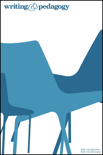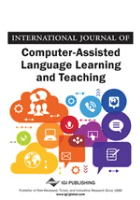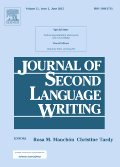
COLLEGE COMPOSITION AND COMMUNICATION
Scope & Guideline
Redefining the Interplay of Language and Literature.
Introduction
Aims and Scopes
- Composition Pedagogy:
The journal focuses on innovative teaching methodologies, particularly in the context of first-year writing courses and writing centers, promoting practices that enhance student engagement and learning outcomes. - Rhetorical Studies:
A significant emphasis is placed on rhetorical analysis and its application within composition studies, exploring how rhetoric shapes communication practices in diverse contexts. - Cultural Rhetorics:
The exploration of cultural rhetorics is a core area, examining how cultural narratives and identities influence writing and communication, particularly in marginalized communities. - Language Justice and Equity:
The journal advocates for language justice and equity in writing practices, addressing issues of access, representation, and the role of language in social justice. - Multimodal Composition:
Research on multimodal approaches to composition is highlighted, reflecting the integration of various media and technologies in writing and communication. - Community Engagement and Activism:
The journal emphasizes community-based writing practices and the role of composition in fostering civic engagement and social change.
Trending and Emerging
- Antiracist Pedagogy:
There is a notable increase in research dedicated to antiracist pedagogical practices, emphasizing the need for inclusivity and equity in composition classrooms. - Digital Literacies and Technologies:
Emerging themes around digital literacies are prevalent, focusing on how technology influences writing practices and the integration of digital tools in the composition process. - Community-Based Writing:
A trend towards community engagement is evident, with scholars exploring how writing can serve as a tool for social change and community empowerment. - Emotional and Affective Dimensions of Writing:
Research examining the emotional aspects of writing, including affective agency, is gaining traction, highlighting the importance of emotional engagement in writing processes. - Cultural Rhetorics and Identity:
The exploration of cultural rhetorics, particularly in relation to identity and belonging, is increasingly prominent, reflecting a broader commitment to understanding diverse perspectives in composition.
Declining or Waning
- Traditional Rhetoric:
There seems to be a declining focus on traditional rhetoric frameworks, with fewer papers exploring classical rhetorical theories in favor of more contemporary and culturally aware approaches. - Standardized Writing Assessments:
Research centered on standardized assessments and traditional grading methodologies is becoming less frequent, as the journal shifts towards more formative and holistic assessment practices. - The Role of Print Media in Composition:
As digital and multimodal literacies gain traction, discussions centered on print media's role in composition are diminishing, reflecting the changing landscape of communication. - In-depth Historical Analysis of Composition:
While historical perspectives remain important, there is a noticeable decrease in articles that focus solely on extensive historical analyses of composition practices, as newer themes emerge. - Traditional Genre Studies:
The focus on conventional genre studies appears to be waning, with a growing interest in hybrid and emerging genres that challenge traditional classifications.
Similar Journals

Writing & Pedagogy
Shaping the Future of Literacy and EducationWriting & Pedagogy is a renowned academic journal published by EQUINOX PUBLISHING LTD that aims to explore the dynamic interplay between writing and teaching methodologies within the fields of education and linguistics. Since its launch, the journal has rapidly become a vital resource for scholars, practitioners, and students interested in the evolving landscape of literacy, composition, and educational practice. The journal is indexed in Scopus, highlighting its relevance and contribution to the fields, with a current ranking of #499 in Language and Linguistics and #578 in Social Sciences within Linguistics. With a Q4 classification in Education and a Q3 classification in Linguistics and Language as of 2023, it reflects a commitment to quality scholarship while offering open access to a wide range of articles that promote innovative pedagogical approaches. As the journal converges from 2018 to 2023, it continues to attract contributions that push the boundaries of traditional discourse, making it an essential read for anyone engaged in the vital work of writing education and pedagogy.

Lengua y Habla
Bridging Cultures Through Rigorous Linguistic ResearchLengua y Habla is a distinguished academic journal published by UNIV LOS ANDES in Venezuela, recognized for its contribution to the field of linguistics and language studies. With an ISSN of 2244-811X and a commitment to scholarly excellence, this journal has established itself as an important resource for researchers and practitioners alike since its inception in 2013. As of 2023, it is categorized in the Q3 quartile of linguistics and language, reflecting its significant presence in the broader academic community. The journal's Scopus rankings highlight its relevance, placing it in the 52nd percentile in Arts and Humanities and the 48th percentile in Social Sciences. Although it operates under a non-open access model, it provides valuable insights and innovative research aimed at advancing the understanding of language dynamics. With an address situated in the picturesque region of Merida, Venezuela, Lengua y Habla demonstrates a dedicated mission to promote rigorous academic discourse and foster engagement among students, researchers, and language professionals across the globe.

International Journal of Computer-Assisted Language Learning and Teaching
Exploring the synergy of linguistics and technology.Welcome to the International Journal of Computer-Assisted Language Learning and Teaching, a premier publication by IGI Global dedicated to advancing the interdisciplinary research at the intersection of linguistics, education, and computer science. With an ISSN of 2155-7098 and an E-ISSN of 2155-7101, this journal aims to provide a platform for innovative studies on the implementation and effectiveness of technology in language learning and teaching. The journal has earned notable recognition within its field, securing a Q1 ranking in Linguistics and Language and strong placements across several categories in the 2023 Scopus Ranks, including a Q3 classification in Computer Science Applications and Computer Vision and Pattern Recognition. Researchers and educators are encouraged to contribute their findings to foster dialogue around effective computer-assisted methodologies and instructional practices. Although the journal is not open access, it remains a vital resource for researchers, professionals, and students seeking to enhance the efficacy of language education through technological innovation.

WRITTEN COMMUNICATION
Unveiling New Dimensions in Written CommunicationWRITTEN COMMUNICATION is a premier interdisciplinary journal published by SAGE Publications Inc, dedicated to advancing the understanding of communication through writing. With a strong reputation in the field, this journal holds an impressive impact factor, reflecting its significant contribution to the realms of both Communication and Literature and Literary Theory, where it proudly ranks in the top quartile (Q1) according to the 2023 category rankings. The journal's rigorous scholarly articles offer insights into the theoretical, practical, and sociocultural dimensions of written communication, making it an essential resource for researchers, professionals, and students alike. With coverage spanning from 1984 to 2024, WRITTEN COMMUNICATION promotes critical discussions and innovative perspectives, shaping the landscape of writing studies. For those interested in exploring the complexities of writing as a communicative act, this journal serves as a vital platform for academic discourse and discovery.

Rhetoric Review
Pioneering Research for a Dynamic Academic LandscapeRhetoric Review, published by Routledge Journals, Taylor & Francis Ltd, serves as a vital platform for scholars in the fields of Rhetoric, Linguistics, and Literary Theory. Established in 1982, this esteemed journal presents a blend of theoretical frameworks and empirical studies that advance our understanding of rhetorical practices across diverse contexts. It holds a prestigious Q1 ranking in Literature and Literary Theory and a Q2 ranking in Linguistics and Language as of 2023, reflecting its influential role in shaping contemporary discourse in these disciplines. With an impressive Scopus rank of #85 out of 1106 in Literature and Literary Theory, Rhetoric Review is a go-to resource for researchers, professionals, and students aiming to explore the intricacies of language and communication. While the journal is not open access, it offers a comprehensive range of articles, reviews, and theoretical discussions that contribute significantly to both academic scholarship and practical applications in rhetoric. The journal’s commitment to publishing pioneering research ensures its relevance in an ever-evolving academic landscape.

JOURNAL OF SECOND LANGUAGE WRITING
Transforming Second Language Writing Through Rigorous ResearchJOURNAL OF SECOND LANGUAGE WRITING, an esteemed publication of PERGAMON-ELSEVIER SCIENCE LTD, serves as a pivotal resource in the fields of Education and Linguistics, exhibiting a remarkable impact factor that solidifies its standing in the academic community. Established in 1992, this journal has consistently provided a platform for high-quality research and discourse, with its articles rigorously peer-reviewed to ensure scholarly integrity. Holding Q1 rankings in both Education and Linguistics for 2023, it is recognized for its influence in shaping the field of second language acquisition and pedagogy. With impressive Scopus rankings that place it in the 98th percentile among peers, the journal attracts a diverse readership comprising researchers, educators, and students eager to explore the intricacies of second language writing. Its focus encompasses theoretical research, practical applications, and innovative methodologies that enrich the field, making it an essential resource for those dedicated to understanding and enhancing the writing skills of second language learners.

Malaysian Journal of ELT Research
Unlocking Potential in ELT: Research that Inspires ChangeMalaysian Journal of ELT Research is a pioneering platform dedicated to advancing the field of English Language Teaching (ELT) research, published by the Malaysian English Language Teaching Association. With an ISSN of 1511-8002, this journal serves as a vital resource for educators, researchers, and practitioners who are passionate about enhancing English language instruction in Malaysia and beyond. Although specific impact factors are currently not available, the journal's commitment to quality research is evident in its rigorous peer-review process, fostering innovative studies that address contemporary challenges in ELT. The journal embraces a wide range of topics within English language pedagogy, including but not limited to curriculum development, teaching methodologies, and language assessment. It provides an open-access model, ensuring that valuable research insights are readily accessible to a global audience. With its strategic focus on enriching English language education, the Malaysian Journal of ELT Research stands as an important contributor to scholarly discourse in the realm of language teaching and learning.

South African Journal of Higher Education
Connecting ideas to transform higher education.South African Journal of Higher Education, published by SUNJOURNALS, is a leading peer-reviewed platform dedicated to advancing scholarship in the field of higher education. As an Open Access journal since 2016, it ensures that research findings are freely accessible to a global audience, fostering collaboration and innovation among researchers, educators, and policymakers. With the ISSN 1011-3487 and E-ISSN 1753-5913, this journal aims to disseminate high-quality research that addresses current challenges and trends in higher education within South Africa and beyond. The journal's commitment to scholarly excellence enhances its importance in contributing to impactful educational practices and reforms. By providing a platform for contemporary academic discourse, it serves as a vital resource for professionals in the field, facilitating the exchange of ideas that can shape the future of higher education. For researchers, this journal is an invaluable tool for staying abreast of the latest studies, methodologies, and theoretical frameworks.

Art Design & Communication in Higher Education
Elevating Educational Experiences with Creative DiscoursesArt Design & Communication in Higher Education, published by INTELLECT LTD, is a pivotal journal that explores the intersection of creativity and pedagogy within higher education. With an ISSN of 1474-273X and E-ISSN 2040-0896, this journal has carved a niche in the field, achieving notable rankings in various categories, including Q2 in Arts and Humanities and Q3 in Communication for 2023. Covering converged years from 2012 to 2024, it aims to foster scholarly discourse on innovative practices, research methodologies, and frameworks that enhance teaching and learning experiences in art and communication disciplines. Despite not being an open access publication, the journal remains a significant resource for educators, researchers, and practitioners seeking to engage with progressive theories and applications in the arts and educational communication. Consistently recognized for its contributions, it ranks in the 89th percentile within General Arts and Humanities, highlighting its importance as a leading platform for relevant scholarly work.

Communitas
Navigating the Intersection of Language and SocietyCommunitas, published by the University of the Free State, is an esteemed open-access journal that has been a gateway for innovative research and discourse in the fields of communication, linguistics, and language since its inception in 2017. With an ISSN of 1023-0556 and E-ISSN of 2415-0525, the journal aims to foster scholarly exchange by providing a platform for critical analysis and interdisciplinary collaboration. Although it currently falls into Q4 in Communication and Q3 in Linguistics and Language, *Communitas* has made significant strides in establishing its presence in Scopus rankings—ranking 567 out of 1088 in Arts and Humanities and 397 out of 511 in Communication—and sources for researchers at varying stages of their careers. Addressed to a global readership, the journal invites contributions that enhance understanding and generate new perspectives on socio-linguistic issues and communicative practices, making it a pivotal resource for researchers, academics, and students committed to advancing knowledge in these dynamic fields.